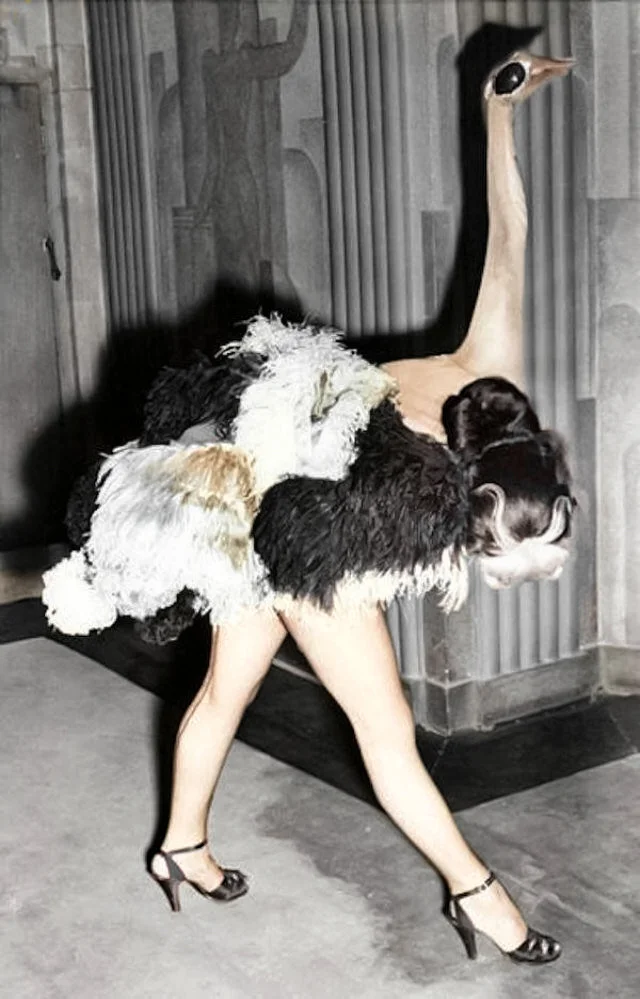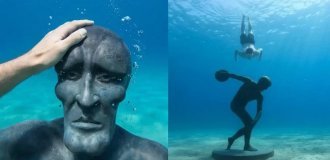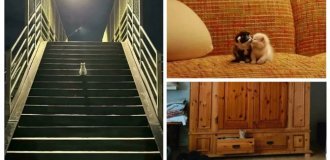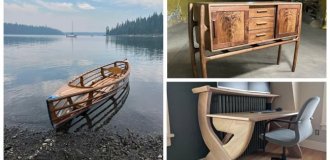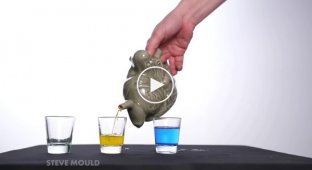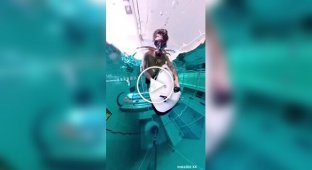A selection of photos from the past that will surprise you (21 photos)
A selection of historical photographs brought to life through coloring immerses us in the amazing world of the past. Taken in different decades of the 20th century in different parts of the world, these pictures not only recreate the spirit of their era, but also give moments of humor and amazement. 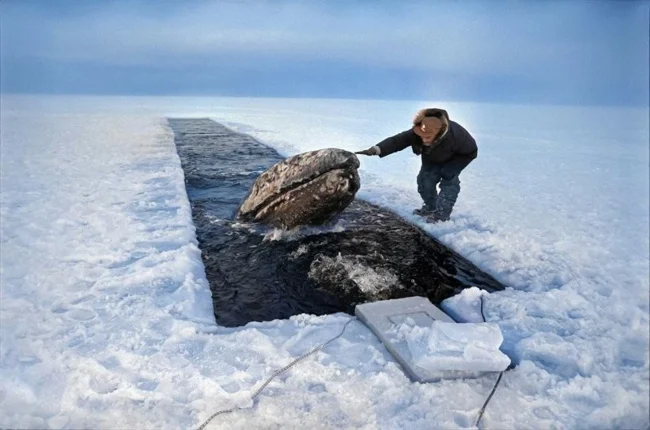
Patricia Hearst in a bikini made of human hair, 1968. 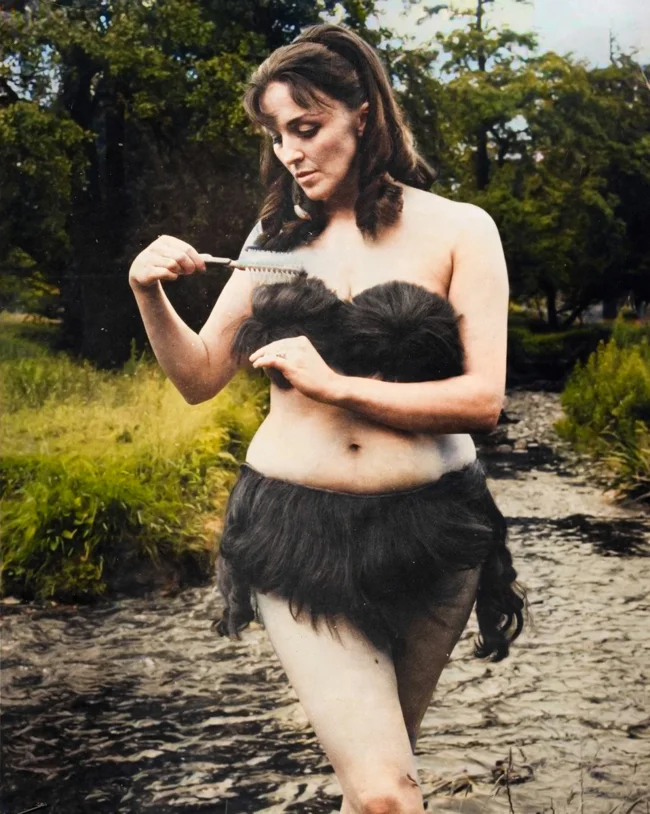
Using animal fur and skin to make clothing has been considered natural for centuries, as these materials provide protection, warmth, and comfort. However, the idea of wearing clothing made from human hair is much more controversial. On the one hand, hair is an organic material that, like fur or leather, can be used in crafts or design. Historically, human hair has been used in various cultures to create jewelry, wigs, or even clothing, often with ritual or symbolic significance. On the other hand, the modern perception of human hair as a clothing material is very different. Hair is associated with the personality of its owner, which makes its use for such purposes ethically complex and ambiguous. In addition, cultural norms and taboos force us to perceive such things as something beyond the ordinary.
Photo of tightrope walker Philippe Petit, who walked between the two towers of Notre Dame de Paris at a height of almost 70 meters. June 26, 1971. 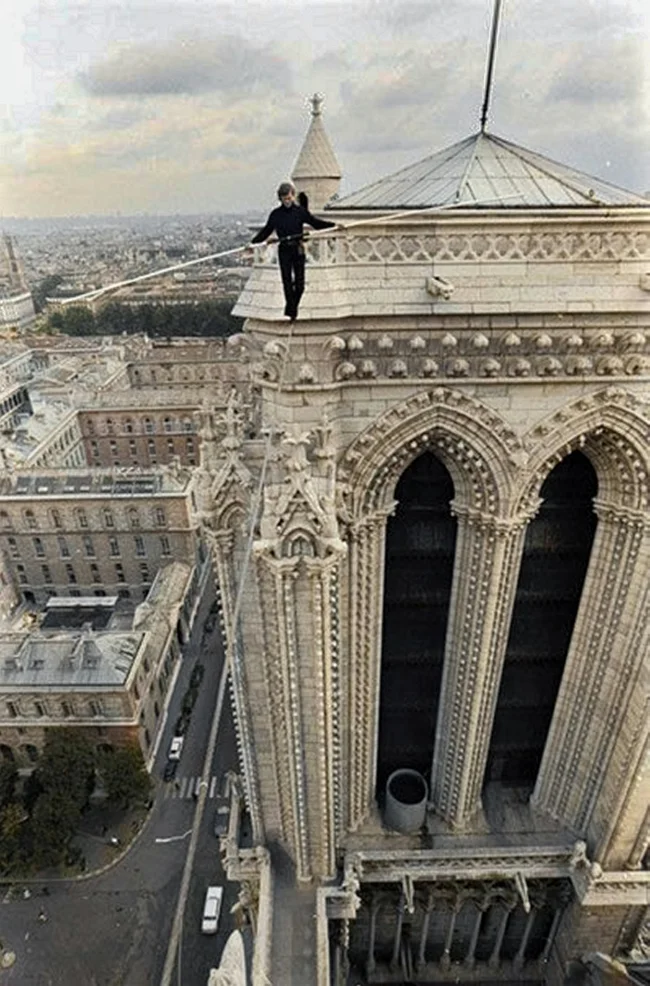
Power claw - part of the Hardiman-1 exoskeleton. USA. 1967. 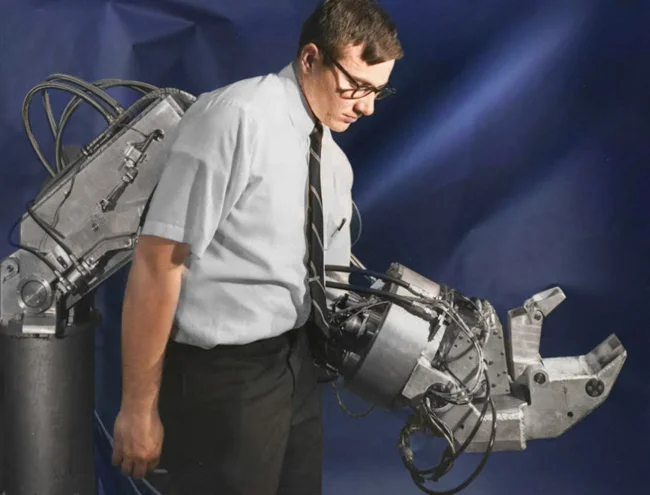
Hardiman 1 was an ambitious project to create the first practical powered exoskeleton, developed by General Electric in conjunction with the US military. The main purpose of the exoskeleton was to service aircraft, including installing bombs and other suspended equipment, without the need for transporters or winches. However, the project encountered serious difficulties associated with the controllability of the system. As a result, only the left arm of the device, installed on a special stand, could function correctly, although the right one was also made of metal. Two legs were designed, but only one remained functional. The operator could not maintain balance and move independently. In 1971, the Hardiman project was closed due to the lack of real prospects for further development.
Actor Johnny Icke, born with an underdeveloped lower body, poses for a publicity photo for the famous film "Freaks." 1932. 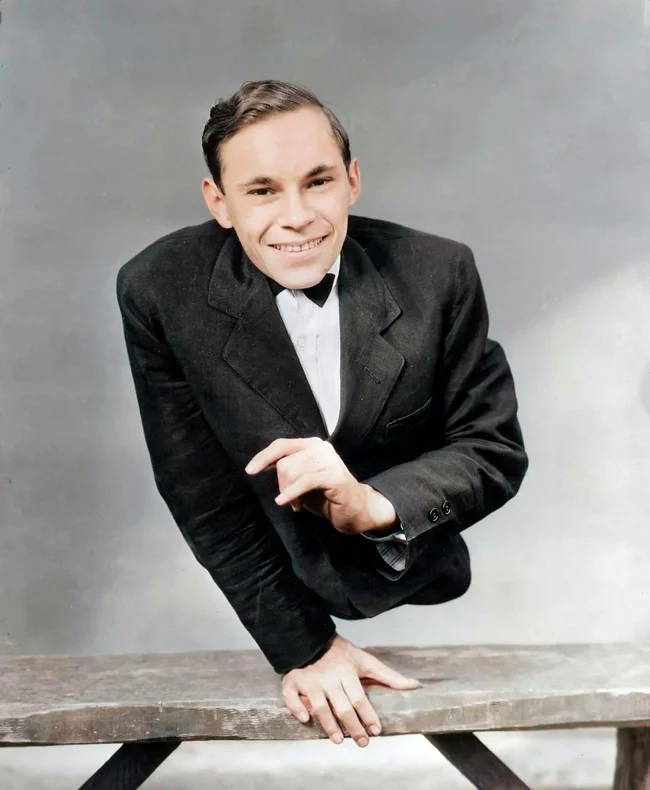
Johnny Icke is a unique American actor, circus performer, and artist who has become a symbol of inspiration for millions thanks to his amazing story and talent. He was born on August 27, 1911, in Baltimore, Maryland. Johnny was an unusual person: due to a rare congenital anomaly known as caudal regression syndrome , he was missing the lower part of his body. However, this did not prevent him from achieving success and becoming one of the most striking figures of his time. From an early age, Johnny learned to adapt to life without legs. He walked on his hands, demonstrating amazing strength and agility. His family supported him, which helped him develop self-confidence and a desire for self-expression. Already at a young age, he began performing in the circus and at fairs, attracting the attention of the public with his unique abilities. Johnny Eek gained wide fame thanks to his performances in circus shows, especially in the famous Ringling Brothers Circus. His acts included acrobatics, juggling and even tightrope walking. The audience was amazed by his grace, strength and charisma. One of the highlights of his career was his participation in the film "Freaks" (1932), a cult black-and-white horror film directed by Tod Browning. Johnny played the role of "half a man", which made him one of the most memorable figures in the film. In addition to his acting career, Johnny Eek was a talented artist and created paintings that were highly valued. He was also a designer and art collector. In his later years, Johnny chose to retire from public life, living a modest life in Baltimore. He died on January 5, 1991, leaving behind a rich legacy as a man who overcame physical limitations and proved that the spirit is more important than any circumstance.
Saving the Whales 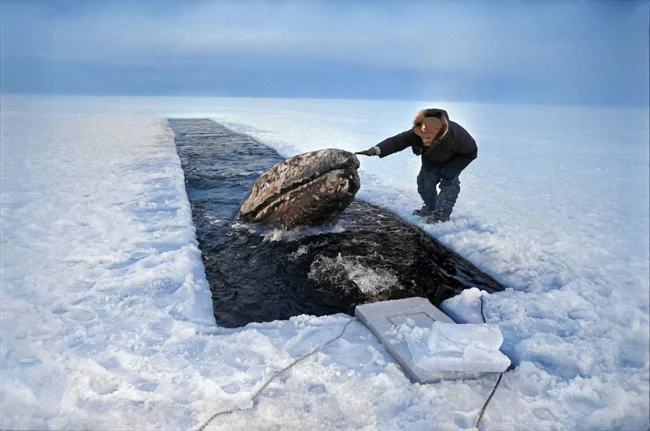
On October 26, 1988, Soviet sailors performed a heroic act, rescuing a family of whales trapped in ice off the coast of Alaska. It all started when Eskimo Roy Ahmagoak noticed three gray whales stuck in an ice trap near Cape Barrow. Multi-year layers of ice blocked their path to freedom. For almost two weeks, local residents and American rescuers tried to help the animals, but to no avail - the powerful US barge was unable to get to the scene. Then the Americans turned to the Soviet Union for help. The answer came quickly: the Soviet icebreakers Admiral Makarov and Vladimir Arsenyev were sent to the scene. By the time they arrived, one of the whales had already died, suffocated under the ice, but the other two continued to fight for life. The situation remained critical, and the only hope was the Soviet sailors. The Admiral Makarov was the first to get to work, breaking through the meters of ice to the entrance to the lagoon. However, its draft did not allow it to move further. Then the Vladimir Arsenyev entered the action, risking running aground, and continued through the strait, cutting through the ice. Thanks to their efforts, the whales were able to get out into the channel dug by the American rescuers and then swim out to the open sea. This story became a symbol of international cooperation and courage, demonstrating how countries can unite to save lives, even during the Cold War.
Army Day parade. Taiwan, 1951. 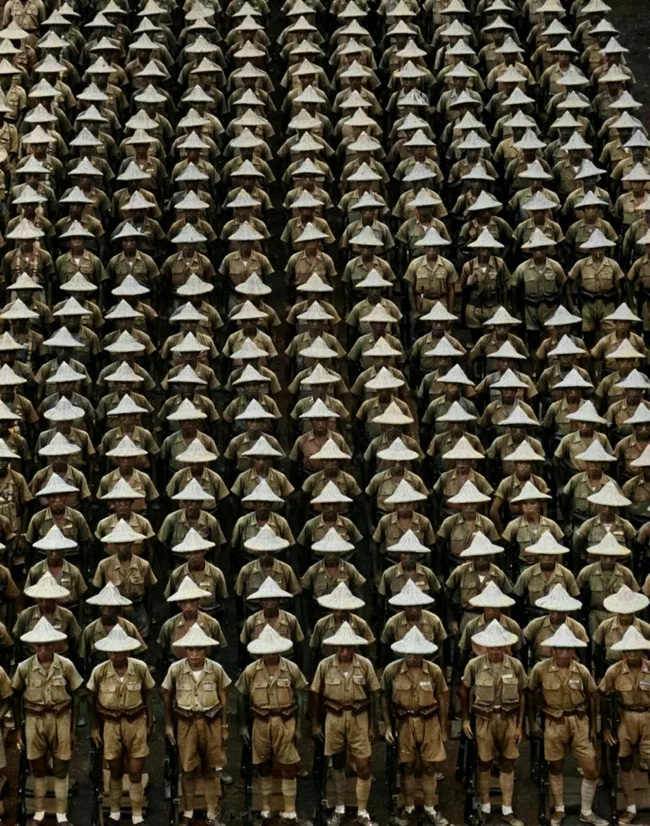
Carnival at Beiers eetcafe. Waiters in masks. Munich, Germany, 1933. 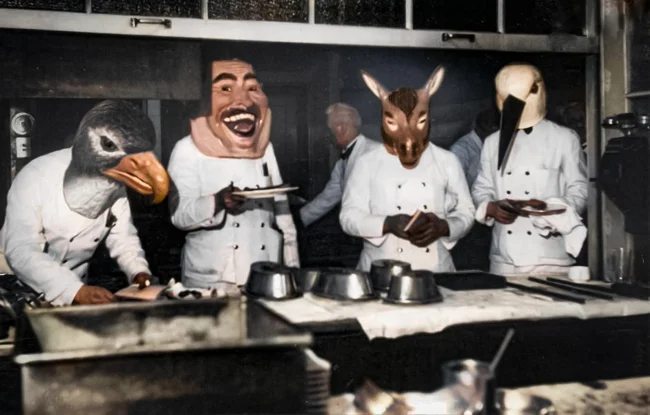
American archer Nancy Gray tries to shoot an apple off her friend's head with a bow and arrow, 1964. 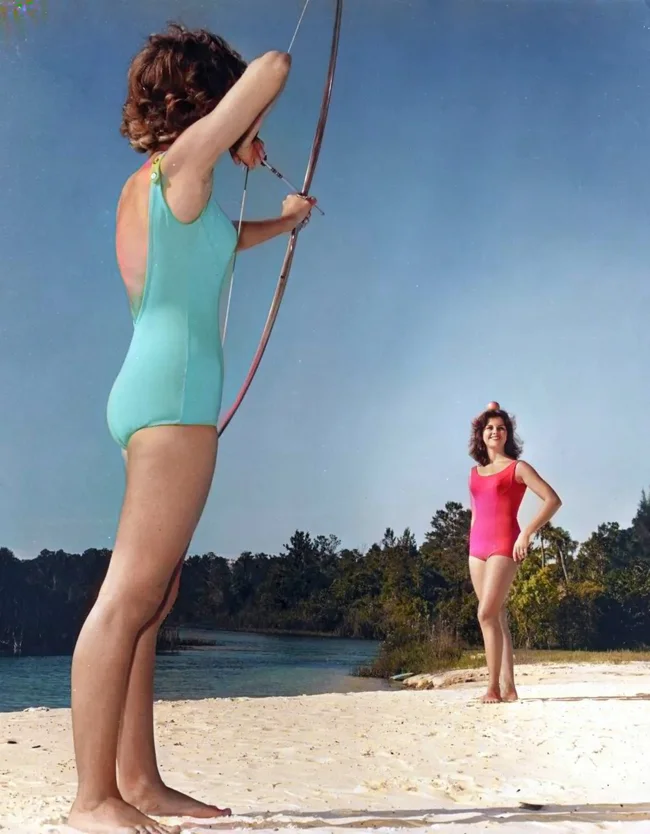
Photographer: Alan Band
Two NASA engineers inside the wind tunnel hangar at the Ames Research Center, 1960.
A 10-story row of blades spins air around one of the four corners of the 40-by-80-foot wind tunnel. 
A large family. Tifton, Georgia, USA, 1909.
Katherine Young (40) is pictured with her children: Mell (14 years 10 months), Mattie (recently turned 14), Mary (just celebrated her 11th birthday), Alex (9 years 8 months), Eddie Lou (8 years 5 months), Elsie (about 6 years), Seaborn (about 5 years), Elizabeth (2 years 9 months), and her youngest son, Jesse (1 year 8 months). The two older children had already left home to start their own families. Katherine was widowed after her husband's death. 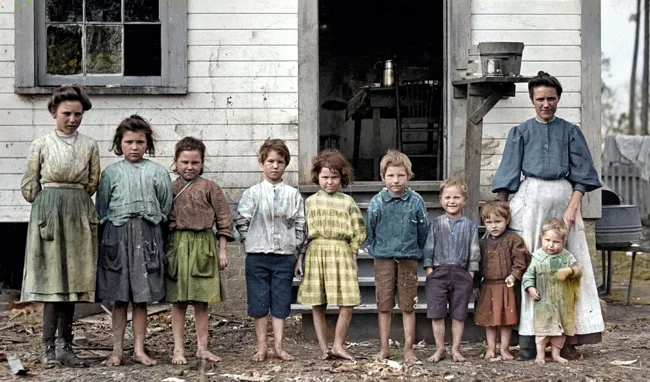
Photographer: Lewis Hine
Woman carrying swordfish heads, Cartagena, Spain, 1951. 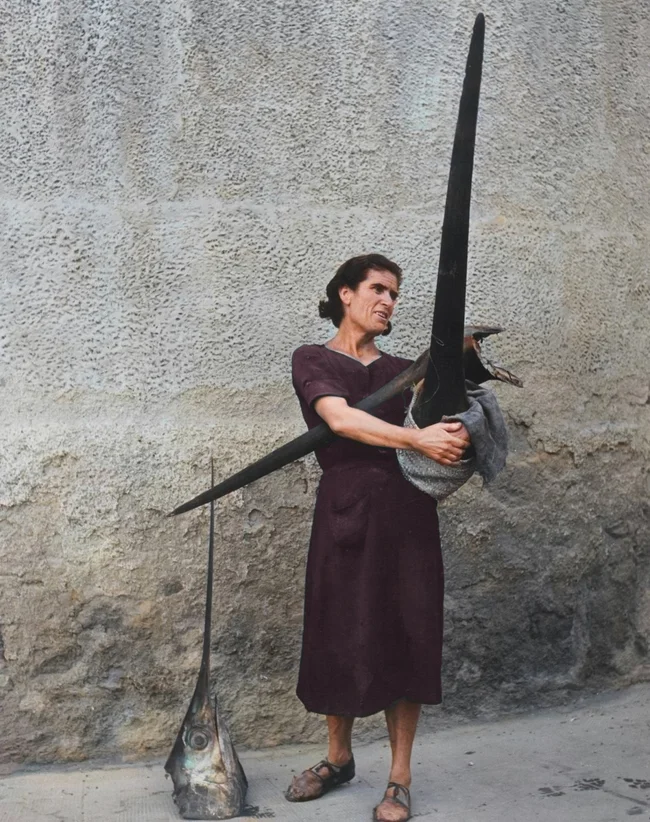
Photographer: Michael Wohlgensinger
Rabbits and a researcher Rabbits were used for pharmaceutical testing in a lab, 1950s. 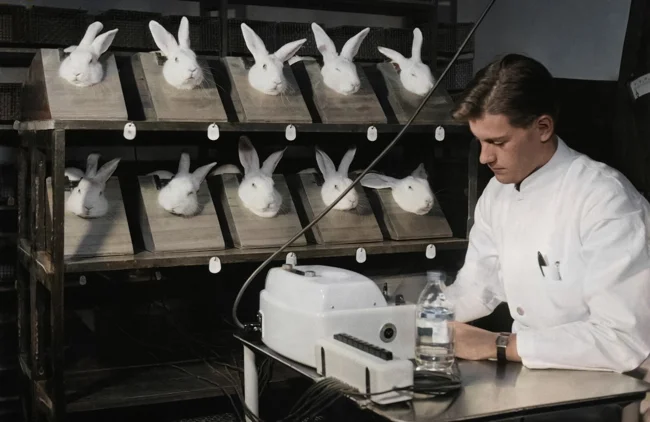
Testing the experimental speedboat of Thompson and Reed. USA, Michigan, 1940.
This strange watercraft, an experimental "torpedo boat". The large wheel was driven by a 360 horsepower engine. Its designers, American T. F. Thompson and Canadian A. W. Reed, hoped that it would be able to reach speeds of up to 30 miles per hour. 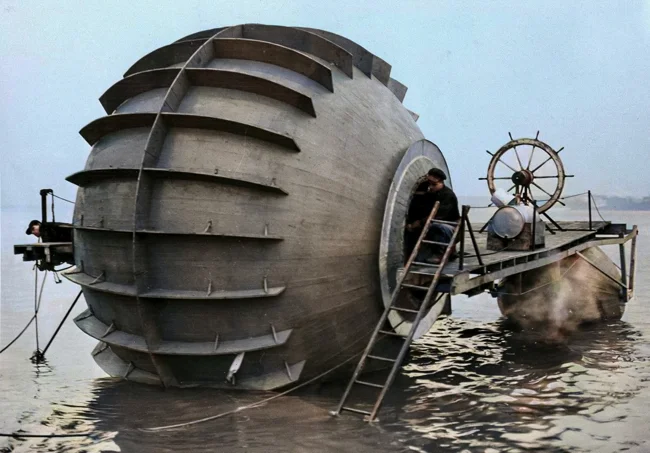
Demonstration of the first home dishwasher, 1921. 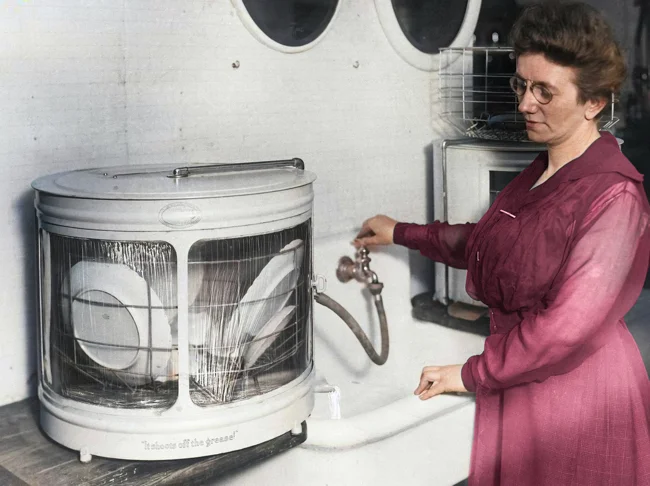
"Liquid Stockings"
In the 1940s, due to the shortage caused by the war, stockings became a rarity - silk and nylon were sent to military needs. However, appearing in society with uncovered legs was considered indecent, and women found a way out. They began to apply so-called "liquid stockings" to the legs, and to imitate a seam at the back, they drew a line with a pencil. 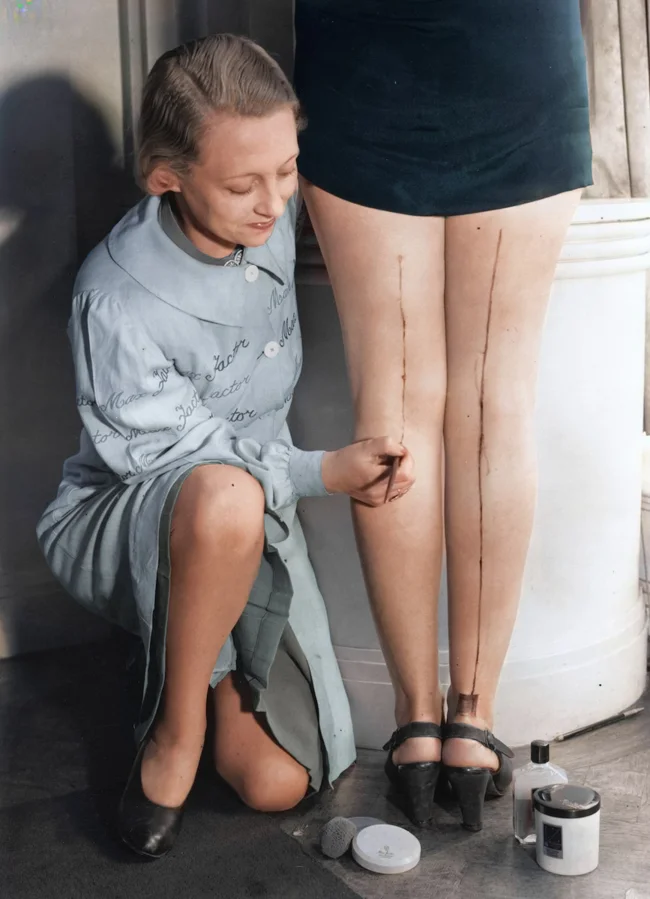
Advertising poster for the film "Alice in Wonderland", 1933.
Charlotte Henry (as Alice) and George Ovey (as Plum Pudding). Plum Pudding is a traditional English dessert that is especially popular during the Christmas season. 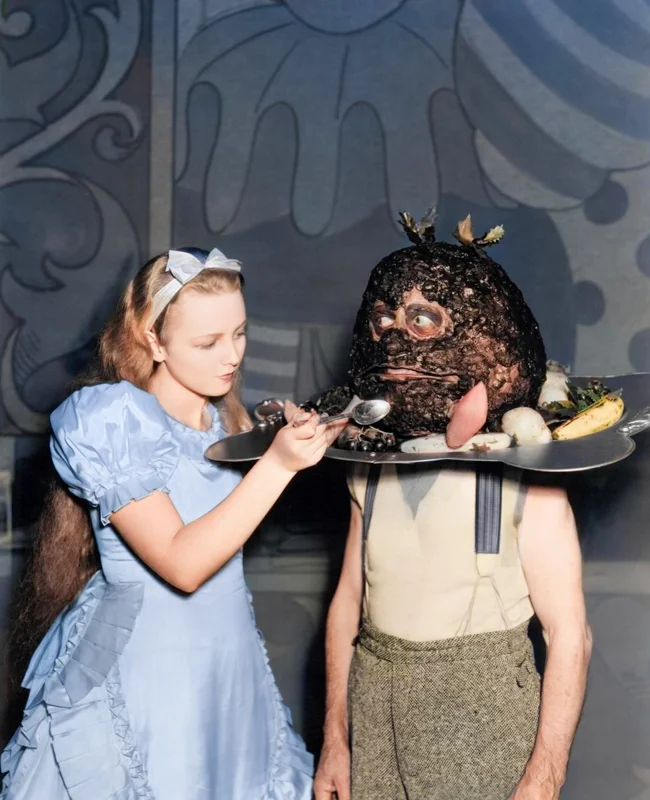
A girl walks down a staircase with a pet alligator. England, 1976. 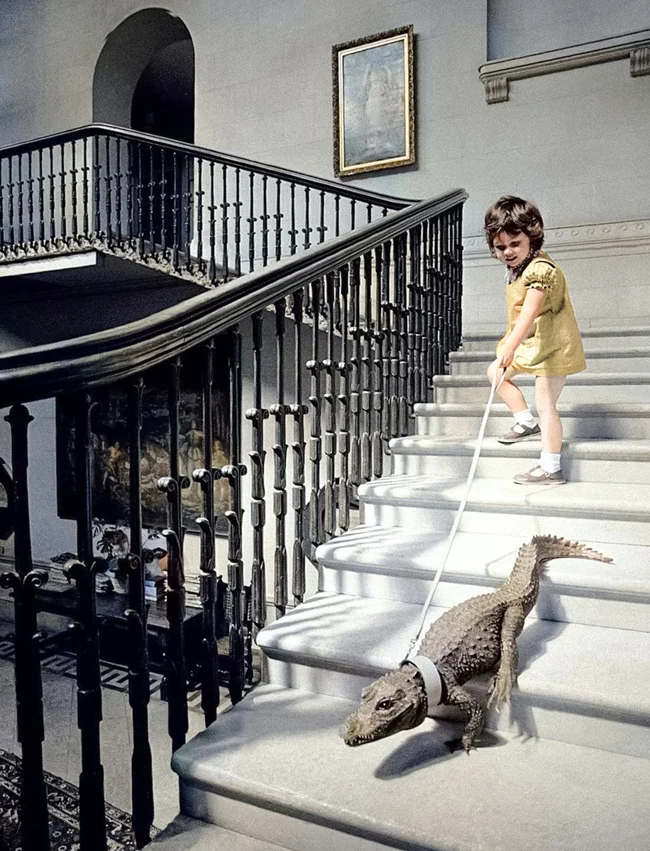
Photographer: John Drysdale.
A scene from the ballet "Bluebeard" directed by Pina Bausch, Wuppertal, 1977.
There are special holes in the wall that you can step on. 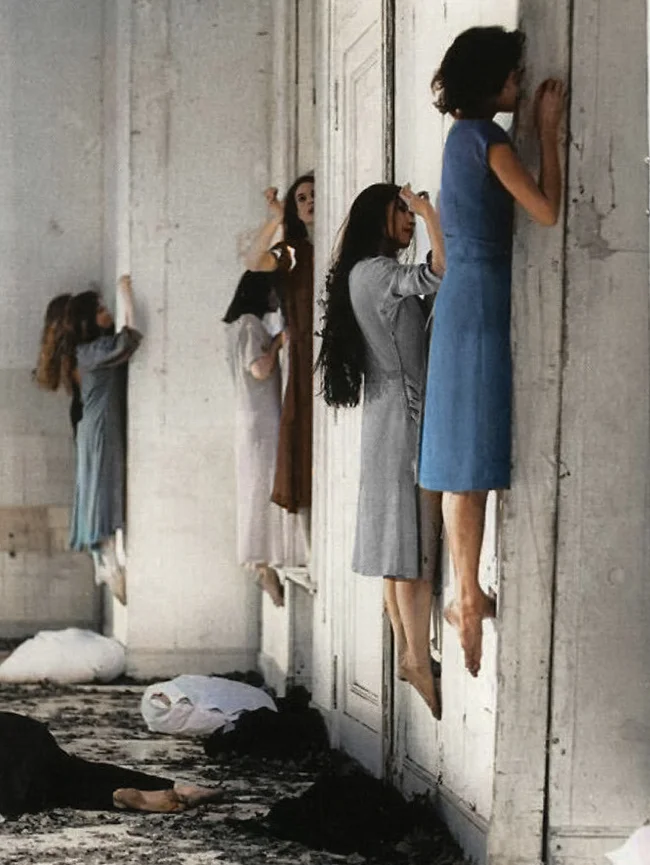
Giant crosses formed by lights in the windows of New York skyscrapers as decorations for Easter, 1956. 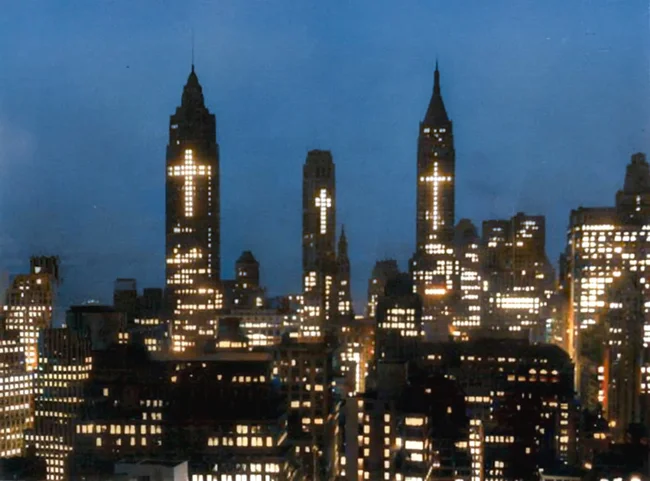
A dancer dressed as an ostrich in the Folies-Bergere show at the London Hippodrome. England, 1951. 